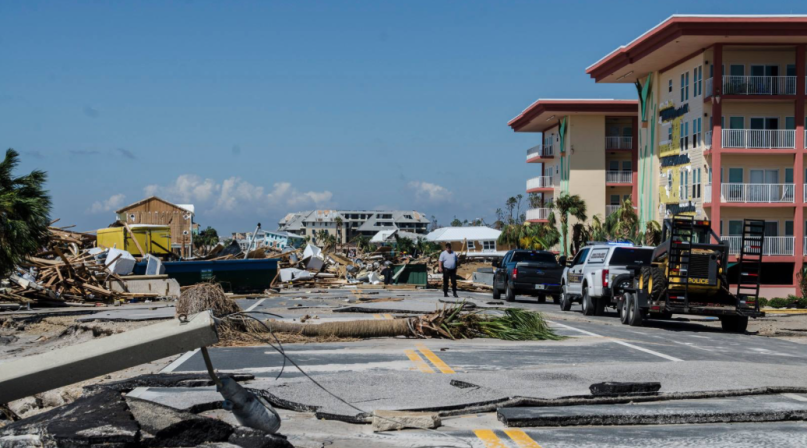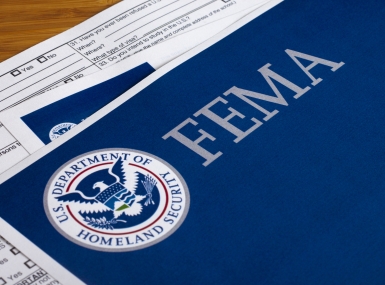Hurricane Michael leaves trail of destruction in Florida Panhandle counties

Six days after Hurricane Michael made landfall in Florida, 26 people in four states have been declared dead and county officials are concerned about fires spreading from residents burning debris.
Bay County, which has reported 12 deaths so far, extended a countywide state of emergency for seven days after commissioners met Oct. 16. The commissioners also passed a burn ban, echoing a concern shared by officials throughout the panhandle. Bay County commissioners are going as far as to offer to remove debris from private property, despite doubt that the services would be reimbursed by the Federal Emergency Management Agency (FEMA).
Do More
Donations can be made to the American Red Cross or the Salvation Army.
"People are eager to get their lives back to normal, but we're stressing that they shouldn't burn their debris," said Olivia Smith, public information officer for Gadsden County. "We obviosuly had some rain during the hurricane, but overall conditions are very dry and a fire can get out of hand quickly."
Michael ripped through the panhandle and into Florida, Georgia, Alabama, North Carolina and South Carolina last week, knocking out power and peeling off roofs in counties across the region after making landfall Oct. 10 packing 155-MPH winds.
“Cell towers are down and some of the county emergency operations centers were damaged in that region,” said Virginia “Ginger” Delegal, executive director of the Florida Association of Counties. “Some of these counties are our smallest and most rural — their resources are extraordinarily limited.”
Some of the hardest hit counties include Bay, Washington, Holmes, Jackson, Calhoun, Gulf, Franklin, Liberty, Gadsden, Leon and Wakulla. Bay, Gulf and Wakulla counties were under a mandatory evacuation in the runup to the storm.
The Category 4 monster storm (just 2 MPH shy of a Category 5) killed four people in Gadsden County, Fla., and a girl in Seminole County, Ga., according to The New York Times, which described the hurricane as the worst to ever hit the region since record-keeping began in 1851. A man was killed driving his car when a tree fell on it in Iredell County, N.C. as the storm spun northward. The storm was the third most intense to ever hit the continental United States, Accuweather reported.
Delegal, whose power and internet at home were out the day after the storm hit, said she was having trouble getting through to county officials due to power and cell tower outages. Major roadways across the region were impassable, she noted, including about 80 miles of Interstate 10 that later reopened.
When compared to previous hurricanes, there seemed to be more time for pre-storm preparation, she noted. “The storm came up quickly,” she said, but the counties were as prepared as they could be, with limited resources. The storm morphed from a tropical storm into a Category 3 hurricane in a matter of six hours Oct. 9. About 6,000 residents occupied 80 shelters in the region that night, before the hurricane hit the next day, the American Red Cross reported.
Counties kept in touch with residents by posting to social media. Bay County, Fla. Emergency Services posted updates on its Facebook page noting curfews and impassable roads, asking residents to shelter in place and notifying residents of downed power lines as well as warning them to boil water or drink bottled water. The messages were shared by the thousands with hundreds commenting.
Franklin County, Fla. reportedly saw a storm surge of 10 feet of water. The wind gauge at the county airport there blew off after recording gusts of 90 MPH, The Washington Post reported. Ralph Thomas, chairman of the Wakulla County, Fla. Board of County Commissioners, said the storm surge reached 12 feet.
Thomas said that grassroots support for victims of the storm has been remarkable.
"I'll get thousands of a reactions for Facebook posts," he said. "It seems like anytime someone says they need something, four or five people will volunteer to make it happen."

Attachments
Related News

County Countdown – September 22, 2025
Every other week, NACo's County Countdown reviews top federal policy advocacy items with an eye towards counties and the intergovernmental partnership. This week features a short-term funding bill introduced to avert shutdown, new Rural Health Transformation Program and more.

County Countdown – September 9, 2025
Every other week, NACo's County Countdown reviews top federal policy advocacy items with an eye towards counties and the intergovernmental partnership. This week features FEMA reform bill advancement, a major reorganization of the USDA and more.

Counties Advocate for Passage of FEMA Act Alongside National Preparedness Month
NACo recognizes September as National Preparedness Month, an opportunity to highlight the essential role of counties in preparing for and responding to disasters. Counties will advocate throughout the month for passage of the FEMA Act (H.R. 4669), which was approved last Tuesday by the U.S. House Transportation and Infrastructure Committee by a vote of 57-3.
